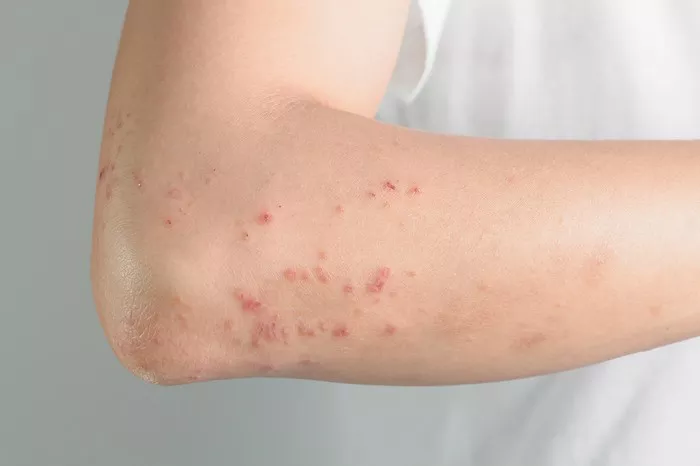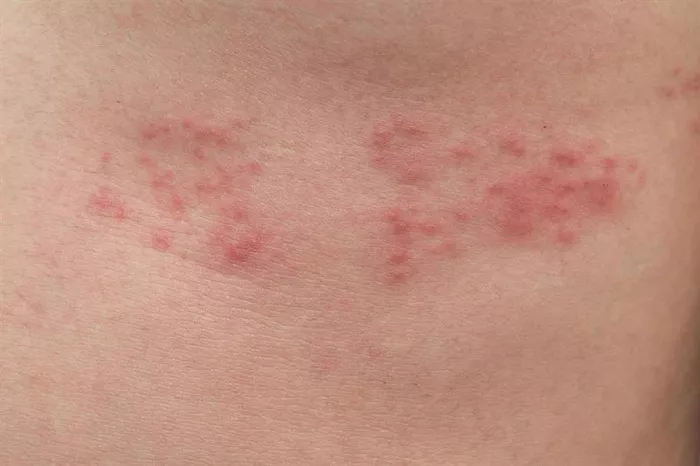Understanding Ringworm
Ringworm is a common skin condition caused by fungi, specifically dermatophytes. It can affect anyone, regardless of age, and is often characterized by red, itchy, circular rashes.
Types of Ringworm
Tinea Corporis: This type affects the skin on the body and is often recognized by its circular patches with clear centers.
Tinea Pedis: Known as athlete’s foot, it typically appears between the toes and on the soles.
Tinea Cruris: Commonly referred to as jock itch, this affects the groin area.
Tinea Capitis: This type affects the scalp and may lead to hair loss in patches.
SEE ALSO: What Is Ringworm Caused By?
Symptoms of Ringworm
Recognizing the symptoms is essential for effective treatment. Common symptoms include:
Red, Circular Rash: The rash usually has raised edges and may be scaly.
Itching and Burning Sensation: The affected area often feels uncomfortable.
Flaky or Cracked Skin: Skin may peel, especially in more severe cases.
Blisters: In some instances, blisters can develop, leading to oozing and crusting.
Choosing the Right Cream
Selecting an effective cream involves several considerations:
Active Ingredients
Look for antifungal agents. Here are the most effective:
Clotrimazole: A broad-spectrum antifungal that disrupts the fungal cell membrane.
Miconazole: Works by inhibiting the growth of fungi and is effective against various dermatophytes.
Terbinafine: A potent antifungal that interferes with the production of ergosterol, a vital component of fungal cell membranes.
Ketoconazole: Effective against a variety of fungi and can treat resistant infections.
Formulation
Creams: Ideal for smooth skin areas and provide moisture.
Ointments: Thicker consistency; suitable for dry or cracked skin.
Sprays: Useful for large areas or hairy regions where cream application may be difficult.
Skin Sensitivity
If you have sensitive skin, opt for formulations labeled as hypoallergenic or free from fragrances, as these are less likely to cause irritation.
Top Recommended Ringworm Creams
1. Clotrimazole Cream
Brand Examples: Lotrimin, Canesten.
Active Ingredient: Clotrimazole 1%.
Effectiveness: Effective against a wide range of fungi, including those causing ringworm.
Usage: Apply twice daily for 2-4 weeks. Continue even if symptoms improve to ensure complete eradication.
Pros: Well-tolerated, affordable, and available over-the-counter (OTC).
2. Miconazole Nitrate Cream
Brand Examples: Monistat Derm, Lotrimin AF.
Active Ingredient: Miconazole Nitrate 2%.
Effectiveness: Effective against superficial fungal infections, including athlete’s foot.
Usage: Apply twice daily for up to 4 weeks. As with clotrimazole, continue usage even after symptoms improve.
Pros: Also treats athlete’s foot, making it versatile for various fungal infections.
3. Terbinafine Cream
Brand Examples: Lamisil.
Active Ingredient: Terbinafine Hydrochloride 1%.
Effectiveness: Rapid action against ringworm, often showing improvement within days.
Usage: Typically applied once or twice daily for 1-2 weeks.
Pros: Fast relief from symptoms, making it a favorite for many users.
4. Ketoconazole Cream
Brand Examples: Nizoral.
Active Ingredient: Ketoconazole 2%.
Effectiveness: Effective against a variety of fungal infections and often used for stubborn cases.
Usage: Apply once daily for about 2 weeks. Always follow the doctor’s recommendation for severe cases.
Pros: Highly effective for resistant infections.
Application Tips
To ensure the effectiveness of the cream, follow these application tips:
Clean the Area: Wash the affected skin gently with mild soap and water.
Dry Thoroughly: Pat the area dry with a clean towel. Moisture can encourage fungal growth.
Apply Generously: Use enough cream to cover the entire affected area and a little beyond the edges to ensure thorough treatment.
Wash Hands After Use: Always wash your hands after applying the cream to prevent spreading the infection to other areas or people.
Preventing Recurrence
Preventing ringworm from returning is crucial. Here are effective strategies:
Maintain Dryness
Keep Skin Dry: Use antifungal powders in warm, moist areas to absorb moisture.
Change Socks Regularly: If you have athlete’s foot, change your socks frequently and opt for moisture-wicking materials.
Avoid Sharing Personal Items
Personal Hygiene: Do not share towels, clothing, or personal grooming items like razors or brushes.
Wear Breathable Fabrics
Choose the Right Clothing: Opt for breathable, loose-fitting clothing made of cotton to allow air circulation and reduce moisture.
Maintain Good Hygiene
Wash Hands Regularly: Always wash your hands thoroughly, especially after touching affected areas.
Shower After Exercise: Always shower after exercising or sweating heavily.
When to See a Doctor
Consult a healthcare professional if:
Persistent Symptoms: The cream does not improve your condition within 2 weeks.
Severe Symptoms: You experience intense pain, swelling, or systemic symptoms like fever.
Recurrent Infections: Frequent outbreaks may indicate an underlying health issue or a need for stronger prescription treatment.
Conclusion
Ringworm can be effectively treated with the right antifungal cream. Look for creams containing clotrimazole, miconazole, terbinafine, or ketoconazole. Follow the application instructions carefully, practice good hygiene, and adopt preventative measures to avoid recurrence. Always consult a doctor for severe or persistent cases to ensure appropriate treatment and evaluation.
Related topics:

























